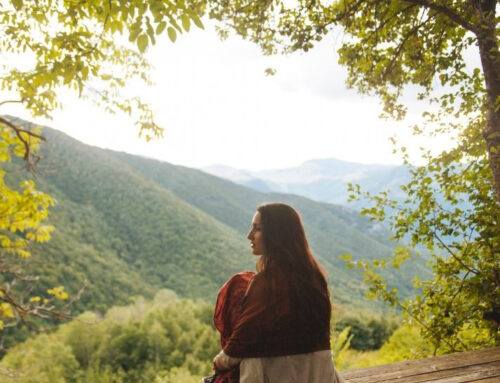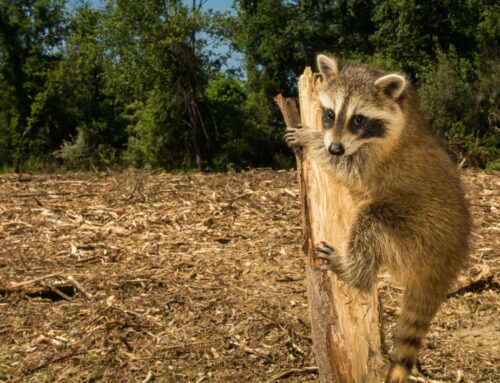In the news today I read with amusement an article titled Chaos Gardening. Supposedly, chaos gardening is the gardening world’s newest craze and a video about it has taken Tik Tok by storm. Even the 2023 Royal Horticultural Society has jumped on board by including an example of it in the annual Chelsea Flower Show. The trend has apparently gone viral because it suggests even the laziest of gardeners are able to create award worthy gardens by simply gathering up any unused seeds – annual, perennial, or even vegetable, mixing them together, broadcasting them into some dirt, and adding water. Hmmmm.
But there are a few things to consider with this “new” way of gardening.
First, chaos gardening isn’t new. Rather, it is the newest trendy phrase for natural and relaxed gardening practices. Think, cottage gardens, pollinator gardens, meadowscaping, rewilding, ecogardening, wild gardening, etc. If you envision any one – or parts of all these approaches to gardening practices and styles – you’ll get the premise of what chaos gardening is supposed to be.
Second, while I love the idea of freely broadcasting seeds in a garden to create a lush and natural greenspace, think twice about the seeds you plan to use:
1) Are the seeds over a year old? If yes, they may be past their prime and may fail to germinate.
2) Will the seeds you’ve just purchased grow in your area? Plants that require zone 7 or higher climate conditions will most likely fail miserably in zones 5 and below after the first frost. Think similar climate challenges for beauties like peonies which require colder temperatures to set those gorgeous blossoms.
3) Do all the seeds you planted have the same culture requirements? Some plants need sun, lots of room to grow, and may have minimal water needs. Others may be heavy feeders and grow best in shade where their tender leaves will not be scorched under the heat of summer. Also, remember that some plants are annual, some are biennial, and some are perennial, meaning you may have to wait a year – or two – to see some plants in all their glory. Before mixing seeds together, make sure to consider each plant’s germination, life cycle, and growth requirements.
4) Are those seeds you want to plant noxious or invasive to your local ecosystem? If they are, you will actually harm the very habitat you are trying to support and enhance. Plus, you will not be making many friends if those innocent looking seeds you planted become aggressive monsters which take over your neighbors’ lawns and gardens.
5) Next, some seeds and their grown-up plants simply don’t play nicely with others. In fact, some are cold-blooded killers via chemical warfare. Take Black Walnut for example. Many plants such as the Black Walnut release biochemical substances which inhibit germination, growth, reproduction, even the survival, of other plants to decrease competition for food, water, and/or other nutrients (a biological phenomenon referred to as allelopathy). Black Walnut’s allelopathic chemical is Juglone, and Juglone is particularly harmful to many plants such tomatoes, hydrangea, and pine. Other plants which are known to utilize allelopathic substances include fennel, rice, peas, sorghum, and wild ginger. So, if you wish to mix a handful of different seeds together to create your “natural” garden, do a bit of homework first.
6) Finally, some seeds and their adult plants are downright dangerous to humans and pets. Those fairy tale Foxglove flowers which look like magical bells and heavenly scented Lilies of the Valley contain digitalis and other powerful chemicals which affect the heart. Even Castor beans, which produce stunning leaves and flowers, contain the poison ricin. Other commonly found plants which are dangerous include Hogweed, Water Hemlock, Azaleas, Daffodils, and Delphinium. All plants possess their own unique chemical properties – with some being more toxic than others. Therefore, we need to be mindful of what we plant if children and pets will be in the garden.
Third, be leery of seed or garden supply ads which promise how one container of their seeds will create a vast meadow full of gorgeous pollinator wildflowers from spring through fall (been there, done that). The truth is your garden may produce some lovely flowers, but it will probably not resemble the picturesque photo in the ad due to many of the reasons I stated above.
So, does this mean I do not support chaos gardening? Absolutely not. Heck, I have always considered myself a chaos gardener long before the term became trendy. My preferred garden style has always been one of a mix between a cottage garden and an eco/wildlife/natural nature space. And while I do take time to consider plant culture requirements and four-season garden succession, I have a VERY relaxed approach to weeding and maintenance in the garden beyond what is required for plant health and esthetics. Also, I wholeheartedly support any trend in gardening which encourages people to get outside, play in the dirt, and experience the many emotional, physical, and mental benefits of gardening and nature.
However, what is most important is this:
Mother Nature IS chaos.
Beyond the obvious unpredictable elements of nature such as the sun, the rain, and the change of seasons, nature brings us other endless unexpected and unpredictable surprises – the very definition of chaos. The rejuvenation of a favorite plant we thought was dead. Chaos. New flowers in our gardens “planted” by birds or squirrels. Chaos. A new Autumn Blaze Maple tree growing in just the right spot thanks to the wind carrying a whirligig. Chaos.
So, long live chaos. Long live responsible chaos gardening. And long live the wonder and the many miracles of gardening.








